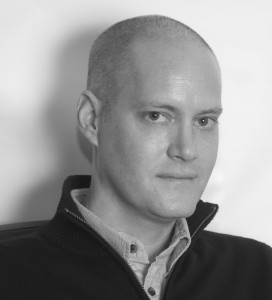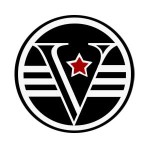The responses from the authors I tagged are coming in fast and furious. Well, furious isn’t really the right word. Fast and fiercely? Fast and fervently?
Here’s sci fi/fantasy author Christopher Keelty’s Next Big Thing…
What is the working title of your book?
Andromedan Sons. This could easily change. I’ve never been much good at titles, and rarely love what I come up with. For the record, it’s a book I’m shopping around right now, but I haven’t yet found an agent or publisher.
Where did the idea come from for the book?
I created the main character when I was about 11 years old. He was one of my first ever fictional creations, sort of a blend of Superman, Batman, James Bond and MacGyver, with some original touches. He was definitely a traditional adolescent male power fantasy: handsome and sexy, rich, and with an answer for every problem.
Over the years I’ve had different ideas about how to use him. I finally had an idea I considered good enough for a novel. It’s an action-adventure novel, but it’s also a reflection on how such a figure would fit into a corporatized future America, what that would do to the kind of idealistic person who’d enter the super-heroing industry, and what it would do to the people around him.
What genre does your book fall under?
I like the term “Science Fantasy,” which reflects a story more concerned with character, action, and drama than getting all the science correct. There’s no such shelf in book stores, though, so I go with Science Fiction.
Which actors would you choose to play your characters in a movie rendition?
It’s really not something I think about a lot. I’m sort of focused on seeing it as a book, let alone a movie. I guess Brad Pitt would help sell tickets, and I think he’d bring the right balance of sex appeal and introspection to my protagonist. I’d be happy to see Sean Paul Lockhart play my narrator. It’s an interesting approach, and I think his background would inform the role well.
The female lead is someone who pretends to be a brash and impulsive sexpot, but conceals a more complex, conflicted side. Being this is fantasy casting, I think Mila Kunis would kick ass in the role. She’d need a blonde wig, though.
That said, I’d be happier to see first-time actors cast in most roles. Sure, I’d like to sell tickets, but a long-term relationship with an actor has made me acutely aware how hard it is (harder than ever, seriously) to break into Hollywood. Liz would be fantastic, of course–but it would be super-weird to see her portray a character I invented.
What is the one-sentence synopsis of your book?
The world’s most famous super hero and the young reporter writing his profile are accused of assassinating the President of the United States, and flee their dystopic future Earth as they fight to clear their names.
How long did it take you to write the first draft of your manuscript?
As often seems to happen, I wrote the first few chapters and set them aside. I picked them up a year or so later, and I think it took me about 18 months before I had a complete first draft.
What other books would you compare this story to within your genre?
I have to admit I don’t read super-hero novels. I intentionally tried to emulateFight Club and The Amazing Adventures of Kavalier and Klay in some ways, like the interplay between characters and some of the background. Richard Morgan’s Black Man was a definite influence on the way I tried to subtly reveal the world to the reader.
Who or what inspired you to write this book?
If I had to name a single inspiration, it was my friend Nick. In junior high school he and I used to spend nights writing, and then pass each other pages of product in the morning before school. He got used to reading a lot about this super-hero character, and one of the characters in the novel is a nod to one of Nick’s creations.
What else about your book might pique the reader’s interest?
While I tried to put the adventure, characters, and science fiction first, I try to write about what interests me–which means issues like environmental disaster and climate change, queer issues, racial and gender discrimination, sexual politics, and income inequality have prominent places. I hope not in a heavy-handed way–my aim is that someone with no interest in politics can still read and enjoy the book, but maybe come away unintentionally enlightened.




